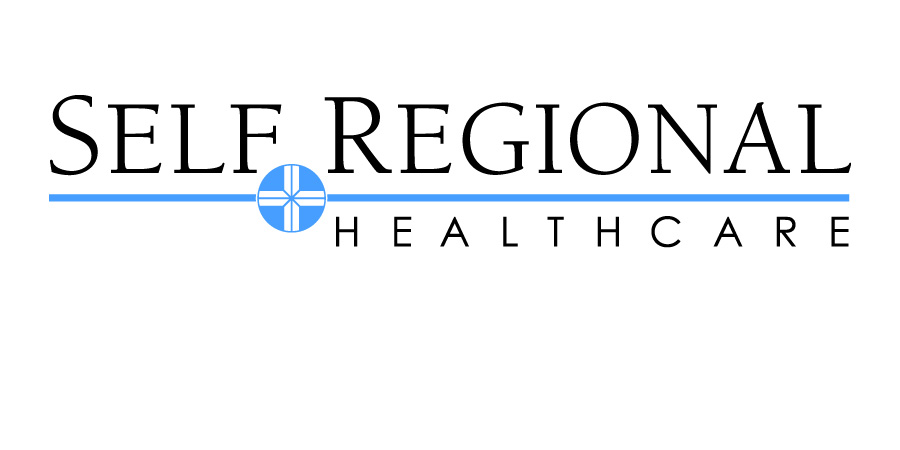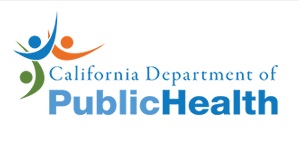Information
-
Document No.
-
Audit Title
-
Client / Site
-
Conducted on
-
Prepared by
-
Location
-
Personnel
-
Date of Audit
-
Patient Initials (if needed)
-
Manager Name
-
Clinician Name
-
Clinician Discipline
GREETING
-
Uses 2 patient identifiers; Each clinician at initial contact uses Name and date of birth, and for subsequent contact Name and facial recognition prior to providing care. NPSG.01.01.01 EP1
-
Professional conduct of dress code, smile, greeting, etc.
-
Facility: Follows facility process of check in, communication with appropriate personnel and documentation.
COMMUNICATION SKILLS - ART OF CARING STANDARDS
-
Warm welcome with eye contact
-
Asked: "What is important to you today?"
-
Listened intently to patient and family
-
Provided opportunity for questions.
-
Patient and family offered choices in their care.
-
Concluded visit: "Is there anything further I can help you with today?"
-
Established patient centered goals of care for episode
-
Included patient, MD and relevant team members in decisions regarding the POC.
TEACHING
-
Identified learning needs, assessed readiness to learn and learning style. PC.02.03.01 EP1, PC.02.03.01 EP3; RI.01.01.03 EP1
-
Used teaching tools as appropriate and simplified language (written and verbal) PC.02.03.01 EP2, RI.01.01.03 EP1
-
Assessed patient/family response to teaching. <br>(Utilizing Teach back) PC.02.03.01 EP25
-
Instructed pt/family/CG in infection control procedures <br>(Hand hygiene/Resp.hygiene/Contact precautions). IC.02.01.01 EP7
-
Emergency telephone numbers (and Polst form as needed) posted and patient knows who to report safety concerns to.
INFECTION CONTROL
-
Followed Hand Hygiene policy. Hand hygiene before/after gloving, before/after touching patient, before entering clinical bag each time, before touching keyboard, when going from dirty to clean body site or area. Allows sanitizer to dry properly.
-
Please give count of the number of times hand washing should have been done during this observation visit. NPSG 7
- 1
- 2
- 3
- 4
- 5
- 6
- 7
- 8
- 9
- 10
- 11
- 12
- 13
- more than 13
-
Please give count of the number of times hand washing was done during this observation visit. NPSG 7
- 1
- 2
- 3
- 4
- 5
- 6
- 7
- 8
- 9
- 10
- 11
- 12
- 13
- more than 13
-
Isolation Precautions: Patient placed on proper precautions and precautions are followed. IC 02.01.01 EP 2 and IC.02.02.01 EP 2
-
Clinical Bag Technique: Followed appropriate bag technique. IC.02.01.01 EP 3
-
Medical Equipment: Removes needed items from bag, places on clean drape or barrier on appropriate surface (not the floor) IC.02.02.01 EP1
-
Medical Equipment: Pink drape or barrier under laptop and cleaned computer at the end of the visit. IC.02.02.01 EP1
-
Medical Supplies: Disposes of supplies properly.
-
Medical Equipment: Cleans and allows to dry before placing back in clinical bag (alcohol = 15 seconds, purple sanicloth = 2 mins, bleach sanicloth = 4 mins IC 02.02.01 EP 1
-
Medical Equipment: Cleans patient dedicated equipment, such as scissors, left in patients home with alcohol prior to use. IC 02.02.01 EP1
SAFETY
-
Used proper body mechanics. Performed safe transfers and asks for assistance when necessary.
-
Assessed/instructed in fire safety/fall safety/ and other identified risk areas. NPSG.09.02.01 EP1, 4
-
Uses Gait belt or other appropriate safety equipment with hi-fall risk activities
MEDICATION REVIEW / RECONCILIATION
-
Asked about med changes since last visit. Home/Facility list & meds patient acutally taking matches the computer med profile - Reconciled with MD any discrepancies. <br>NPSG.03.06.01 EP3; PC.01.02.01 EP10
-
An up to date hard copy of the medication list is in the patient's home. NPSG.03.06.01 EP4
INTERVENTIONS
-
Demonstrated skill and focus in assessments.
-
Followed POC for the next visit. PC.02.01.01 EP1
-
Planned goals and interventions for next visit. PC.02.01.01 EP1
-
Technical procedures demonstrated appropriate skills.
-
Followed MD orders for visits and interventions. PC 02.01.03
-
Notified MD of any changes in patient's condition. PC.02.01.05 EP8
-
Assessed and appropriately addressed pain. PC.01.02.07 EP1& Art of Caring
TIME MANAGEMENT / DOCUMENTATION
-
Documented on the computer in the home and/or completed in a timely manner
CASE MANAGEMENT
-
Supervises home health aide and updates aid POC.
-
Schedules next visit with patient/caregiver.
GREETING
-
Uses 2 patient identifiers; Each clinician at initial contact uses Name and date of birth, and for subsequent contact Name and facial recognition prior to providing care. NPSG.01.01.01 EP1
-
Professional conduct of dress code, smile, greeting, etc.
-
Facility: Follows facility process of check in, communication with appropriate personnel and documentation.
COMMUNICATION SKILLS - ART OF CARING STANDARDS
-
Warm welcome with eye contact
-
Asked: "What is important to you today?"
-
Listened intently to patient and family
-
Provided opportunity for questions.
-
Patient and family offered choices in their care.
-
Concluded visit: "Is there anything further I can help you with today?"
-
Established patient centered goals of care for episode
-
Included patient, MD and relevant team members in decisions regarding the POC.
TEACHING
-
Identified learning needs, assessed readiness to learn and learning style. PC.02.03.01 EP1, PC.02.03.01 EP3; RI.01.01.03 EP1
-
Used teaching tools as appropriate and simplified language (written and verbal) PC.02.03.01 EP2, RI.01.01.03 EP1
-
Assessed patient/family response to teaching. <br>(Utilizing Teach back) PC.02.03.01 EP25
-
Instructed pt/family/CG in infection control procedures <br>(Hand hygiene/Resp.hygiene/Contact precautions). IC.02.01.01 EP7
-
Emergency telephone numbers (and Polst form as needed) posted and patient knows who to report safety concerns to.
INFECTION CONTROL
-
Followed Hand Hygiene policy. Hand hygiene before/after gloving, before/after touching patient, before entering clinical bag each time, before touching keyboard, when going from dirty to clean body site or area. Allows sanitizer to dry properly.
-
Please give count of the number of times hand washing should have been done during this observation visit. NPSG 7
- 1
- 2
- 3
- 4
- 5
- 6
- 7
- 8
- 9
- 10
- 11
- 12
- 13
- more than 13
-
Please give count of the number of times hand washing was done during this observation visit. NPSG 7
- 1
- 2
- 3
- 4
- 5
- 6
- 7
- 8
- 9
- 10
- 11
- 12
- 13
- more than 13
-
Isolation Precautions: Patient placed on proper precautions and precautions are followed. IC 02.01.01 EP 2 and IC.02.02.01 EP 2
-
Clinical Bag Technique: Followed appropriate bag technique. IC.02.01.01 EP 3
-
Medical Equipment: Removes needed items from bag, places on clean drape or barrier on appropriate surface (not the floor) IC.02.02.01 EP1
-
Medical Equipment: Pink drape or barrier under laptop and cleaned computer at the end of the visit. IC.02.02.01 EP1
-
Medical Supplies: Disposes of supplies properly.
-
Medical Equipment: Cleans and allows to dry before placing back in clinical bag (alcohol = 15 seconds, purple sanicloth = 2 mins, bleach sanicloth = 4 mins IC 02.02.01 EP 1
-
Medical Equipment: Cleans patient dedicated equipment, such as scissors, left in patients home with alcohol prior to use. IC 02.02.01 EP1
SAFETY
-
Used proper body mechanics. Performed safe transfers and asks for assistance when necessary.
-
Assessed/instructed in fire safety/fall safety/ and other identified risk areas. NPSG.09.02.01 EP1, 4
-
Uses Gait belt or other appropriate safety equipment with hi-fall risk activities
MEDICATION REVIEW / RECONCILIATION
-
Asked about med changes since last visit. Home/Facility list & meds patient acutally taking matches the computer med profile - Reconciled with MD any discrepancies. <br>NPSG.03.06.01 EP3; PC.01.02.01 EP10
-
An up to date hard copy of the medication list is in the patient's home. NPSG.03.06.01 EP4
INTERVENTIONS
-
Demonstrated skill and focus in assessments.
-
Followed POC for the next visit. PC.02.01.01 EP1
-
Planned goals and interventions for next visit. PC.02.01.01 EP1
-
Technical procedures demonstrated appropriate skills.
-
Followed MD orders for visits and interventions. PC 02.01.03
-
Notified MD of any changes in patient's condition. PC.02.01.05 EP8
-
Assessed and appropriately addressed pain. PC.01.02.07 EP1& Art of Caring
TIME MANAGEMENT / DOCUMENTATION
-
Documented on the computer in the home and/or completed in a timely manner
CASE MANAGEMENT
-
Supervises home health aide and updates aid POC.
-
Schedules next visit with patient/caregiver.
DIRECT PATIENT CARE / WOUND CARE
-
Establishes plastic bag for waste
-
Cleanses hands then gloves
-
Remove old dressing and discards
-
Cleanses hands then gloves
-
Cleanses wounds with proper technique
-
Removes old dressing and discards
-
Cleanses hands then gloves
-
Applies clean dressing
-
New glove set up for individual wounds
-
Solutions are labeled with date opened and expiration date (7 DAY AFTER OPENING)
NURSING ONLY---INR & blood draw
-
Instructed on anti-coagulation information
-
Two patient identifiers were used when administering medications, collecting blood samples and other specimens or clinical testing, and providing other treatments or procedures. NPSG.01.01.01 EP1
-
Containers used for blood and other specimens are labeled in the presence of the patient. NPSG.01.01.01 EP2
-
Anticoagulation Venipuncture was done for high INR results per policy.<br>WT.01.01.01 EP7
-
Proper technique was used for INR testing. WT.01.01.01 EP6
-
INR test results were reported properly. WT.01.01.01 EP8
-
If giving test results over the phone has the receiver read back the results, and documents results as read back.
-
Sharps container used appropriately
MEDICATIONS & SUPPLY STORAGE
-
Instructed in storing medications and supplies.<br>
-
Before administration of a medication, the clinician discusses any unresolved concerns about the medication with the patient's physician, prescriber, and/or staff involved with the patient's care/treatment/services. MM.06.01.01 EP 8
-
Before administration of a new medication, the patient or family is informed about any potential for clinically significant adverse drug reactions or other concerns. MM.06.01.01 EP 9; MM.06.01.03 EPs3-6; PC.02.03.01 EP 10.









